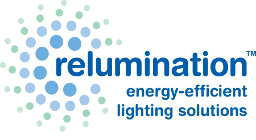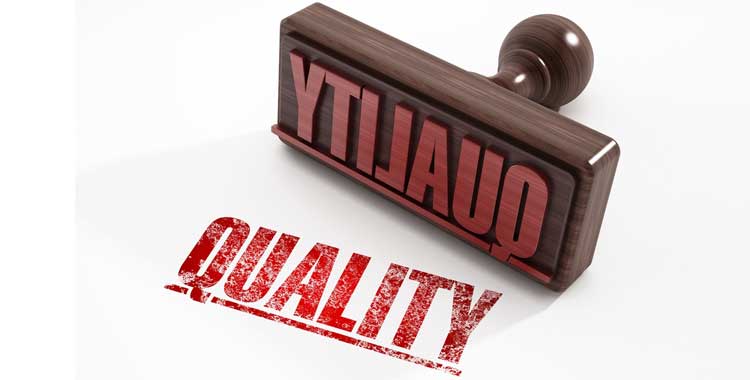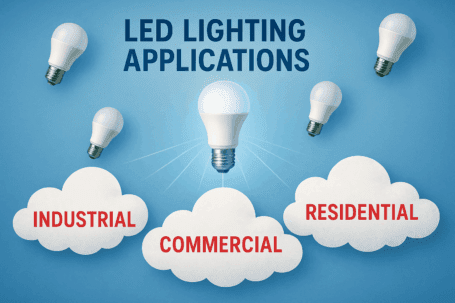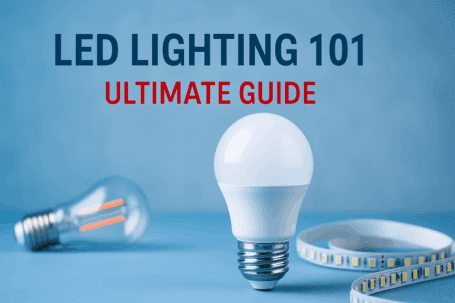As with many business decisions, selecting the best LED fixtures for your business requires a careful weighing of cost against quality, value, and functionality. The wealth of choices and options available can seem overwhelming, and the decision hard to make without expertise in lighting. Here are some suggestions for examining your options.
How to Evaluate LED Fixtures
What should you look for when selecting LED fixtures? Keeping the lights on is, of course, essential, and is a significant cost of running your business, so you’ll want to know how to evaluate available options. Some aspects of LED fixtures to consider include:
- Maintenance – LED fixtures have a dramatically longer lifespan than traditional incandescent or fluorescent lighting, at up to 250,000 hours. They also do not require ballasts, so you will see savings in the frequency of replacing bulbs as well as in not having to replace worn out ballasts. In addition, because LED lighting doesn’t “burn out” in the traditional sense, you won’t see sudden outages, but can schedule bulb replacement more flexibly.
- Energy Consumption & Efficiency – It’s no secret that LED fixtures consume far less energy than traditional lighting. Understanding comparative energy consumption of traditional versus LED lighting can clarify potential savings.
- Lighting Controls – Integrated lighting controls can be a key driver in lowering lighting expenses with features such as automated dimming and daylight and activity sensors. Lighting controls can provide substantial additional value in safety, ambience, and in employee and customer satisfaction.
- Environmental Considerations – Do you have special environmental considerations for LED lighting? These could include high- or low-temperature spaces, indoor or outdoor settings, or moisture exposure. LED lighting, for example, is not cold-sensitive as fluorescent lighting can be.
What to Look for in Quality LED Fixtures
When you’re evaluating LED lighting solutions, here are some important specifications to note.
- Lumens per Watt – Lumens measure how bright a bulb is, while watts show the power consumption of a bulb. The measure of lumens per watt, indicates how efficient a bulb is. Lumens per watt will vary depending on how a bulb makes light (incandescent, fluorescent, LED, etc.), the quality of materials used to make it, and how much energy is wasted as heat rather than light output. With traditional lighting, more watts = brighter light, so more electricity is needed to create brighter light. With LED lighting, the correlation is less direct. As an example, a 100w incandescent bulb has an efficiency of 16 lumens per watt, a 26w CFL bulb rates 61 lumens per watt, and a 22w LED bulb is most efficient at 73 lumens per watt.
- Warranty – As with any smart business decision, be sure to consider warranties on parts and labor so you’re not left in the lurch if a problem arises.
- L70 (LED Lifetime) Ratings – With traditional lighting, bulbs either emit light or don’t (they burn out). LED lighting will very slowly decrease in brightness over time. In general, it’s best to replace LED lighting when it has lost 30% of its brightness — that is, when it’s producing 70% of its original lumens. That 70% level is the L70 rating of an LED bulb. For example, an LED bulb with an L70 or LED Lifetime rating of 50,000 hours means that it can be on for a minimum of 50,000 hours before it will have lost 30% of its brightness.
- Correlated Color Temperature (CCT) – The visual temperature of lighting, measured in Kelvins, indicates where the color of the light falls between cool, bluish-white and warm, golden light. Bright, cool light will generally be better suited to a warehouse or outdoor situation while warmer light will usually work best in a restaurant, hotel, or office. Areas within a facility may also require different temperatures of light.
- Motion Sensors – Motion sensors allow you to automate whether lights are on, and even how bright they are, depending on activity. You may want to have lighting that comes on automatically when someone enters a conference room or a particular warehouse area, for example. Because LED lighting doesn’t require warm-up time to come to full brightness, lights can come on quickly, as needed.
- Dimming – Dimmable fixtures can be very useful in situations where constant light is needed but only active areas require the brightest light. Automatic and even manual dimming can dramatically reduce lighting costs by lowering usage in unneeded spaces.
- Advanced Controls – various capabilities of a lighting control systems including, but not limited to, daylight harvesting, scheduling, task tuning, energy usage reporting, humidity/temperature monitoring. Advanced controls allow a broad or granular bird’s eye view allowing more specific controls for needs of the space.
- Type of Fixture – The types of LED lighting fixtures available are nearly endless, and can be chosen and mounted to suit any need and environmental considerations. High bay lights can illuminate large warehouse areas, linear lighting can work well in aisles, troffer lights are common in offices and schools.
How to Compare Competitor Products
With so many options to consider when evaluating LED lighting choices, you will need to compare options carefully.
- Credibility and Experience – Are the fixtures produced by a company with experience in the field and a solid reputation?
- Value – The upfront cost should not be your only consideration. Cheaper LED lighting will often fail to achieve its stated L70 rating.
- Up to Date – If you want to take advantage of the latest advances in integrated lighting control and automation, you’ll need to select compatible products.
- Compliance – The Federal Energy Management Program has efficiency requirements for some commercial and industrial LED lighting. Other regulations may also be applicable. Ensure your lighting and contractor are knowledgeable and in compliance with such requirements.
The experienced team at Relumination is ready to help you choose the best LED lighting for your business, and apply our years of expertise and high standard of service from needs analysis through project completion, service, and support. Contact us today to see how we can work together for a brighter future for your business.





